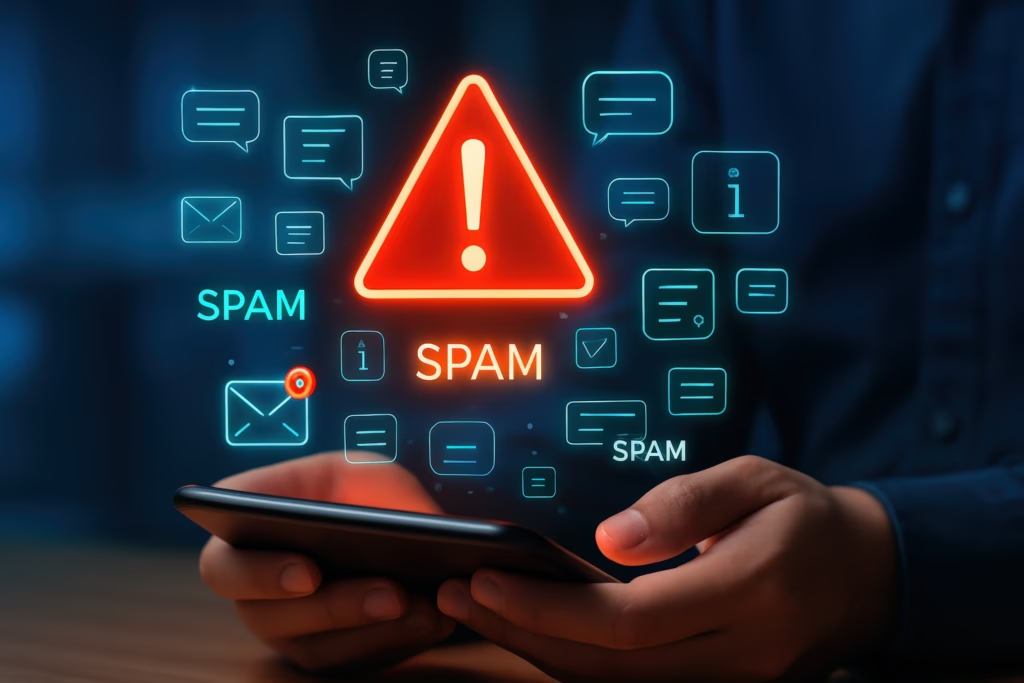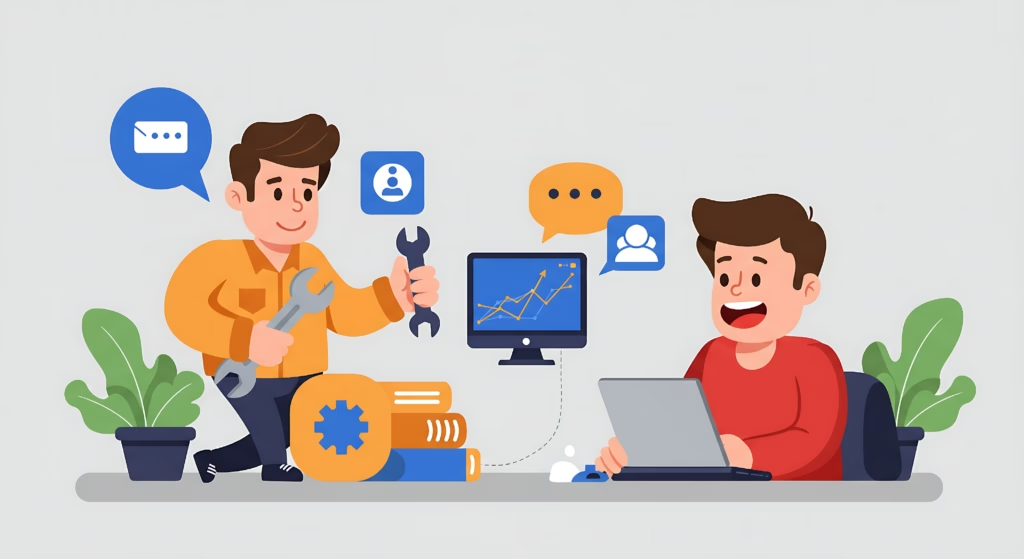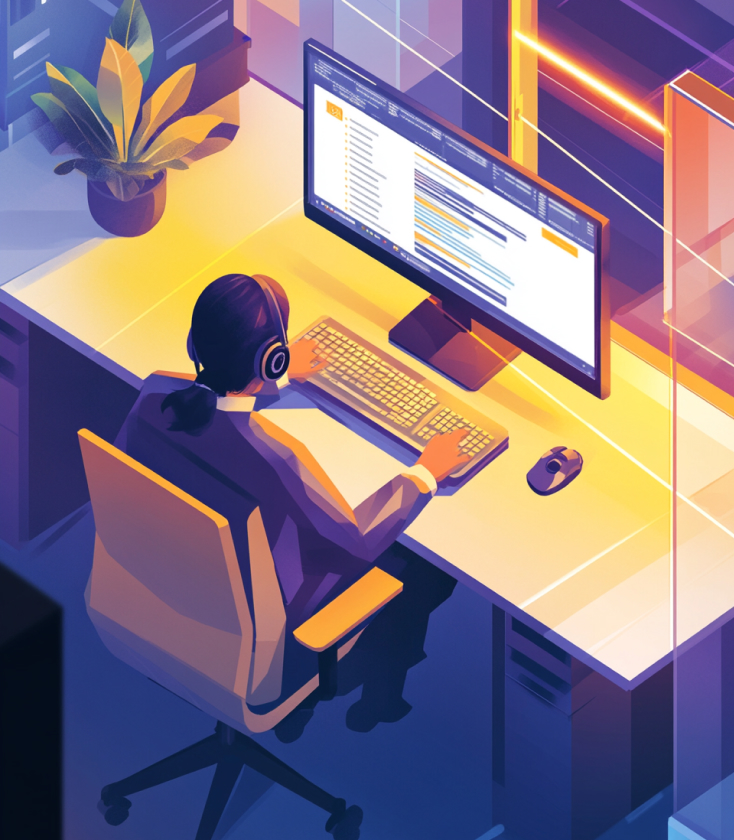Why Your Business Calls are Getting Flagged as SPAM (And What to Do About It)
Businesses across the country are facing a growing crisis: their legitimate phone calls are being marked as “Scam Likely” or “Potential Spam” before customers even have a chance to answer. This isn’t just annoying—it’s devastating to operations. Studies show that when calls are flagged as spam, answer rates plummet by 30-50%. For companies that rely on outbound calling for appointments, sales, or customer service, this translates directly to lost revenue and damaged client relationships.
“Sorry, we don’t answer unknown numbers anymore” has become the modern equivalent of “the check is in the mail.” Except this time, your customers aren’t lying—they genuinely believe your business call is from a scammer. And who can blame them? With approximately four billion robocalls bombarding U.S. consumers monthly (that’s roughly 1-2 calls every second), suspicion has become the default response to any unfamiliar number.
The good news? There are solutions. The bad news? They’re not as simple as adding your number to a registry and calling it a day. Welcome to the world of call attestation, STIR/SHAKEN protocols, and the fight to reclaim your caller reputation.
Understanding the Problem: Why Your Calls Are Being Flagged
First, let’s acknowledge the elephant in the room: the robocall epidemic has created a trust crisis in voice communication. In 2023 alone, consumers lost a staggering $10 billion to phone-based fraud—the highest amount ever reported to the Federal Trade Commission. That’s a billion dollars more than the previous year, suggesting this problem isn’t going away.
Mobile carriers and phone manufacturers, under pressure to protect consumers, have implemented aggressive filtering systems. These systems don’t just block obvious scammers; they often flag legitimate business numbers too. Why? Because the algorithms are designed to be cautious, and many businesses unintentionally trigger the same warning signs as spam callers and end up getting their calls flagged as spam:
- High call volume in short periods
- Calls that don’t result in answers
- Numbers that are relatively new
- Inconsistent caller ID information
- Lack of proper verification or attestation
Perhaps the most frustrating part is that businesses have little visibility into why they’re being flagged. One day your calls are connecting fine; the next, they’re being sent straight to voicemail across all major carriers.
The culprit behind this chaos is a practice called “caller ID spoofing,” where scammers falsify the information transmitted to caller ID to disguise their identity. This tactic has been so effective that the Federal Communications Commission (FCC) has been actively advising consumers: “Don’t answer calls from unknown numbers. Let them go to voicemail.”
Great advice for consumers—terrible news for legitimate businesses.
The Regulatory Response: STIR/SHAKEN Framework
In response to the spoofing epidemic, the FCC mandated implementation of a framework called STIR/SHAKEN. Despite sounding like a James Bond cocktail preference, it’s actually an acronym for Secure Telephone Identity Revisited (STIR) and Signature-based Handling of Asserted Information Using Tokens (SHAKEN).
This framework, required for voice service providers since June 30, 2021, creates a system where calls traveling through phone networks have their caller ID “signed” as legitimate by originating carriers and validated by other carriers before reaching consumers. Essentially, it’s a digital passport for phone calls.
The core of this system is “attestation”—a verification level assigned to each call that indicates how confident the carrier is about who’s making the call and whether they have the right to use that number. There are three attestation levels:
Level A (Full Attestation): The carrier knows the customer and has verified they’re authorized to use the number. This is the gold standard, and calls with A-level attestation are least likely to be flagged as spam. Think of it as getting the TSA PreCheck of phone calls—you’ll sail through with minimal hassle.
Level B (Partial Attestation): The carrier knows the customer but can’t fully verify their right to use the specific number. These calls might get through, but they’re at higher risk of being flagged by downstream analytics. It’s like having your passport but forgetting your visa—you might still get in, but expect additional questions.
Level C (Gateway Attestation): The carrier only knows the call entered from another network but has no relationship with the caller. These calls are most likely to be labeled as spam or blocked entirely. This is essentially showing up at the border with a hand-drawn ID—good luck with that.
Understanding these attestation levels is crucial because they directly affect whether your business calls reach customers or disappear into the spam abyss.
Why Old Solutions No Longer Work
Not long ago, businesses could address spam flagging through services like Free Caller Registry (www.freecallerregistry.com), which allowed companies to register their legitimate numbers with major carriers and analytics companies. While these services still exist, they’re becoming increasingly less effective in the STIR/SHAKEN era.
Why? Because registration alone doesn’t influence attestation levels, which are now the primary factor in determining whether a call gets flagged. Under the new regulations, it’s the relationship between your business and your voice service provider that matters most, not whether you’ve submitted your numbers to a database.
Think of it like this: previously, you could tell the bouncer your name was on the guest list. Now, you need a personal introduction from the club owner. Quite the promotion in requirements, isn’t it?
The implementation of STIR/SHAKEN marks a fundamental shift in how caller identity is verified. Instead of relying on static databases, the system now depends on real-time authentication from your service provider. If your provider can’t vouch for you with high confidence (A-level attestation), your calls are increasingly likely to be blocked or labeled as spam.
And here’s the kicker—this problem is only going to get worse. The FCC continues to tighten regulations around call authentication, with new rules like the Call Authentication Trust Anchor (CATA) order that came into effect on September 2025. These rules will require voice service providers to be much stricter about how they assign attestation levels, especially the coveted A-level attestation.
What Businesses Can Do: Short and Long-Term Solutions
Businesses finding themselves in this spam-flagging nightmare aren’t completely helpless. There are both immediate actions and strategic moves that can improve your situation:
Short-term fixes:
- Maintain consistent calling patterns rather than blasting out high volumes of calls at once
- Ensure your outbound numbers are properly registered with your service provider
- Use the same numbers consistently rather than rotating through multiple DIDs
- Monitor your answer rates closely to detect potential flagging issues early
While these steps might provide some relief, they’re band-aids on a bullet wound. The only true long-term solution centers around proper attestation—specifically, securing that coveted A-level attestation for your business calls.
Achieving this requires selecting a UCaaS (Unified Communications as a Service) provider who not only understands the STIR/SHAKEN framework but has built their infrastructure specifically to support proper attestation. This isn’t just about compliance—it’s about ensuring your provider can validate:
- That they know exactly who you are (verified business relationship)
- That you own or are authorized to use your phone numbers
- That calls originate from their network with proper verification
Many providers claim to support STIR/SHAKEN, but few have architected their systems to consistently deliver A-level attestation. When evaluating providers, ask pointed questions about:
- How they determine attestation levels for customer calls
- Whether they have direct relationships with carriers or rely on aggregators
- If they’ve upgraded their infrastructure to support the September 2025 CATA requirements
- Their track record of call delivery rates to major carriers
The Techmode Solution
Techmode has positioned itself at the forefront of addressing these call attestation challenges. Unlike multi-tenant providers where customer identity can get diluted, Techmode’s platform is built on private AWS instances that give complete control over SIP signaling and identity management. This architecture allows for native embedding of STIR/SHAKEN attestation directly into the outbound call flow.
With Techmode, each call originating from your instance can be digitally signed at the carrier level, ensuring you get the highest possible attestation rating. Their U.S.-based support team helps verify number ownership, and their continuous monitoring prevents bad actors from impacting your reputation. This approach has helped their customers maintain answer rates 15-30% higher than industry averages—critical for sales teams and service organizations.
FAQ: Common Questions About Call Attestation
Q1: Can I fix my spam labeling issues by just changing phone providers?
A: Simply switching providers won’t solve the problem unless your new provider specifically supports proper attestation and has infrastructure designed for A-level verification.
Q2: How long does it take to fix a number that’s being flagged as spam?
A: With proper attestation, improvements can begin within days, but fully rebuilding a number’s reputation typically takes 4-8 weeks of consistent proper calling behavior.
Q3: Does registering my numbers with Free Caller Registry still help?
A: While registration can provide some benefit, it’s now secondary to proper attestation. Under STIR/SHAKEN, your relationship with your service provider matters most.
Q4: How do I know if my calls are being flagged as spam?
A: Sudden drops in answer rates, increased voicemail rates, or direct feedback from customers are all indicators. Some providers also offer analytics to track delivery status.
Q5: Will these attestation requirements eventually go away?
A: No—quite the opposite. The regulatory framework is becoming more stringent, with additional requirements coming into effect in 2025 and beyond.
As spam filtering becomes more aggressive and regulations tighten, businesses must adapt or watch their voice channel effectiveness plummet. By understanding attestation, working with knowledgeable providers, and treating call verification as a critical business priority, companies can ensure their important calls continue to reach customers—without being sentenced to spam folder purgatory.










